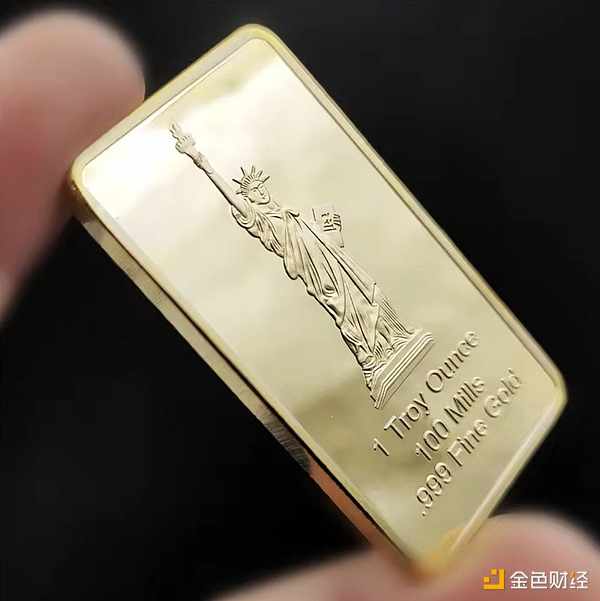Author: ian.btc | 0xWorkhorse, Translated by: Shaw Jinse Finance
With price movements in daily dinner discussions, pessimistic timeline predictions from cryptocurrency pessimists, and reasonable discussions among figures like @notthreadguy, Peter Schiff, and CZ, tokenized gold is becoming an increasingly important consideration as 2026 approaches—even for the initiators of crypto forums.

As people become increasingly interested in this, I receive questions daily about the best way to acquire on-chain gold, how to use it, and where to obtain it.
Currently, the two most popular options are $PAXG (Pax Gold) and $XAUT (Tether Gold)—both are digital representations of physical gold bars issued and managed through blockchain technology. Each token represents one ounce of pure gold, allowing investors to access the value of gold without facing the complexities of storage, transportation, or safekeeping.

Currently, amidst continued economic uncertainty, gold prices have continued to rise (reaching over $4,000/ounce at one point), and these assets are gaining momentum as a reliable store of value in cryptocurrency portfolios. In fact, in October alone, the total market capitalization of the tokenized gold market surpassed $3 billion, with PAXG and XAUT accounting for approximately 89% of the share.
Conversely, gold's proportion is continuously increasing not only in my portfolio but also across the entire industry.
Therefore, I've compiled a comprehensive guide exploring what PAXG and XAUT are, how they work, their regulatory status and security, and how investors can use them—both as long-term hedging tools and as active tools in the decentralized finance (DeFi) space. What are PAXG and XAUT? PAXG, issued by Paxos Trust Company, was launched in 2019 and is one of the first fully regulated digital commodities. Each PAXG token corresponds to a specific, serialized London qualified gold bar, stored in a vault in partnership with Brink's. The gold is fully allocated and audited monthly to ensure one-to-one correspondence. Absolutely reliable. As PAXG is an ERC-20 token, it can be easily integrated into the broader Ethereum ecosystem and can be traded or used in DeFi applications like other tokens. Its market capitalization is approximately $1.22 billion to $1.28 billion, with a circulating supply of approximately 307,000 to 310,000 tokens, and it enjoys ample liquidity on major exchanges including Binance, Coinbase, and Kraken. On the other hand, XAUT is issued by TG Commodities, SA de CV, a Salvadoran entity under Tether. XAUT entered the market in 2020 and also represents ownership of one ounce of London Bullion Market Association (LBMA) standard gold stored in Swiss vaults. Each token is verifiable backed by physical gold, with Tether providing daily reserve snapshots to ensure transparency. XAUT's total supply is approximately 246,500, but it fluctuates with demand—its market capitalization surged to approximately $1.5 billion in 2025, briefly surpassing PAXG. While PAXG was designed for ease of use and regulatory compliance, XAUT focuses on institutional liquidity and integrates with Tether's broader stablecoin infrastructure. How They Work
While both tokens are backed by physical gold, their issuance processes differ in scale and accessibility.
For PAXG, the process begins with users exchanging US dollars or cryptocurrency for PAXG on the Paxos platform. Paxos then allocates an equivalent amount of gold from its gold reserves and issues the tokens on Ethereum.
Each token can be traced back to a specific gold bar using Paxos's verification tool. This tool links blockchain addresses with serial numbers, allowing you to track the movement of gold bars and tokens in real time on their website. With a minimum purchase of only 0.01 ounces—approximately $40 at current prices—it's easily accessible to almost any investor. XAUT takes a more unique approach. Its gold is provided and held by Tether's Swiss partner, issuance requires full KYC verification, and a minimum purchase of 50 XAUTs, equivalent to over $200,000. Each token is minted after the gold is purchased and deposited in a vault, and buyers pay a 0.25% fee when buying and redeeming. While the higher entry barrier limits retail participation, this aligns with XAUT's focus on providing privacy and liquidity for institutional and high-net-worth clients. The redemption process also differs. PAXG holders can redeem their tokens for physical gold, unallocated gold (for institutional clients), or US dollars at market prices. The redemption process is flexible, convenient, and has a low threshold, with physical settlement available, though a fee applies. In contrast, XAUT redemptions are only available for whole gold bars—requiring a minimum deposit of approximately 430 XAUT to cover volatility—and must be delivered within Switzerland. Tokens are burned upon redemption, and compliance reviews may result in a waiting period before settlement. Are they safe? Security largely depends on the completeness of regulation, custody, and auditing. PAXG stands out for its robust U.S. regulatory framework. Paxos Trust Company is regulated by the New York State Department of Financial Services (NYDFS), which requires it to submit rigorous monthly reserve reports and undergo independent third-party audits. This structure places PAXG in one of the strongest compliance environments in the digital asset industry and significantly reduces counterparty risk. XAUT's regulatory landscape is more decentralized. It is regulated by the National Digital Asset Commission of El Salvador (CNAD), with Tether having a portion of its compliance operations in El Salvador, while its vault is located in Switzerland. The token is audited quarterly; Tether has completed a SOC 2 Type 1 audit and plans a Type 2 audit to further strengthen regulatory safeguards. Additionally, the company has engaged Chainalysis for transaction monitoring. While these measures are positive, some analysts point out that Tether's governance structure offers less direct regulatory oversight compared to Paxos' trust model, resulting in a slightly, but perceptible, increase in counterparty risk. The ultimate security of both tokens depends on the vaults and custodians holding the gold. Risks investors should be aware of include gold market price volatility, potential custody issues, blockchain vulnerabilities (such as smart contract vulnerabilities), and changes in regulatory policies for tokenized commodities. In most independent assessments, PAXG scores higher in transparency and regulation, while XAUT is valued for its privacy and connection to the broader Tether liquidity network. Both have demonstrated stability and resilience during periods of market stress, including liquidity crunches and gold price volatility. Ultimately, both are inherently equally secure. Using PAXG and XAUT
Once you understand the mechanics, buying, holding, and integrating tokenized gold into your portfolio becomes very simple.
Once you hold these two tokens, you can integrate them into DeFi protocols.
On platforms like Aave or Morpho, holders can lend out PAXG or XAUT to earn annualized yields, typically between 3% and 20%; or use them as collateral to borrow stablecoins without selling their gold exposure. They can also provide liquidity for trading pairs like PAXG/USDC or XAUT/USDT, on platforms such as LFJ.gg on Avalanche and Uniswap on Ethereum, or use yield aggregators like Pendle to implement fixed-income strategies. As always, yields depend on demand and incentives—higher returns are usually accompanied by higher smart contract risk. XAUT also benefits from integration with the TON blockchain, enabling low-fee staking. Which is better?

While these two assets share the same underlying concept, their design philosophies differ.
PAXG's strengths lie in its regulatory clarity, transparency, and accessibility. It is designed for ordinary investors who wish to invest in gold through a trustworthy, audited framework.
In contrast, XAUT places greater emphasis on liquidity, privacy, and institutional influence, and is closer to Tether's stablecoin model.
In practice, PAXG is easier to buy, has lower transfer costs, and is more convenient for small redemptions. XAUT requires a larger initial investment and is slightly less flexible in redemptions, but it benefits from deep integration with the Tether ecosystem and the resulting liquidity. Both closely track spot gold prices, are audited, and are available for DeFi—but their target user groups differ slightly. While these differences are significant, they are almost negligible for retail investors engaging in on-chain transactions. Both offer good liquidity and are easily tradable on decentralized exchanges (DEXs), regardless of the amount. In summary, PAXG and XAUT represent a new stage in the development of gold: a digital, portable, and programmable form. They allow investors to hold gold as easily as holding stablecoins, while maintaining direct access to verifiable physical gold reserves. PAXG offers US regulatory protection, low-barrier investment, and transparency, making it suitable for mainstream users. XAUT provides an alternative for users who prioritize privacy, larger asset sizes, and interoperability with the Tether network. Both tokens have established themselves in the market as reliable, asset-backed physical gold representatives, while the market's demand for stability and liquidity is increasingly urgent. As tokenized commodities continue to evolve, assets like PAXG and XAUT have the potential (and should) become an important part of diversified on-chain portfolios—they truly are the inheritors of precious metals, which have been anchored to value for millennia, in the blockchain's native realm. As for what I'm currently doing, I'm mining gold like crazy. My funds are heavily deployed on Avalanche and Ethereum mining pools, and I don't expect much change in the near future. While gold is not (and should not be) the core of my on-chain portfolio, it is now automatically included as part of my broader long-term strategy.
 YouQuan
YouQuan






